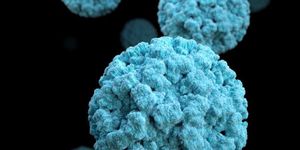One of the deadliest types of cancer is pancreatic ductal adenocarcinoma (PDAC); the survival rate at five years after diagnosis is under ten percent. Most patients have an aggressive, metastatic form, and common treatments like chemotherapy and surgery are not usually effective. One major challenge presented by this disease is heterogeneity; pancreatic cancer tumors may have a variety of different genetic mutations and epigenetic alterations that vary not only from one patient to another, but also within one patients' tumor.
However, researchers have now revealed more about how pancreatic cancer grows and spreads. A type of cancer cell called mesenchymal PDAC cells were found to express high levels of a protein called BMP2, which can help control the expression of a protein called GREM1. GREM1, in turn, can regulate the types of cells that are in pancreatic tumors, and whether they are an aggressive, or a more mild type. The findings have been reported in Nature.
When GREM1 was turned off in a mouse model or in pancreatic tumor organoids, the shape of the tumor changed quickly, and the cancer took on new characteristics that enabled cells to break away from the tumor and invade other tissues. Once GREM1 was deactivated, it only took ten days for tumor cells to become a more dangerous, metastatic type.
When GREM1 was not functional in a mouse model of PDAC, the tumors spread to the mouse livers in about 90 percent of the mice. But if GREM1 was functional, only about 15 percent of the mouse PDAC model had liver tumors.
Importantly, the scientists were also able to reverse this process. When GREM1 levels were raised, invasive cancer cells reverted to a less pathogenic form.
It will take a lot more research and work, but it may be possible to use these findings to tame deadly forms of pancreatic cancer, and turn them into easier-to-treat cell types.
The researchers noted that the regulatory feedback loop that BMP2 and GREM1 create is a reflection of a cell patterning mechanism that was proposed long ago by computer scientist, mathematician, and theoretical biologist Alan Turing. While BMP has a well-established role in tissue patterning during development, the study authors added, this research shows that the process is also active in pancreatic cancer.
"This is an important and fundamental discovery that opens up a new avenue for uncovering treatments for pancreatic cancer," said senior study author and Professor Axel Behrens of the Institute of Cancer Research. "We have shown that it is possible to reverse cell fate in pancreatic cancer in the lab, turning back the clock on aggressive tumors and switching them to a state that makes them easier to treat."
Sources: Institute of Cancer Research, Nature









